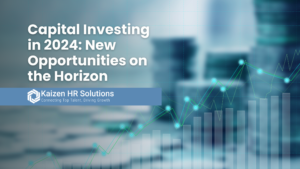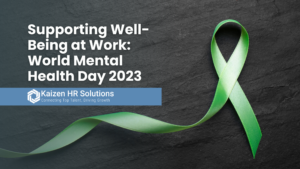You’ve likely seen a shift over the last year. No longer focused on what we have been through, the new emphasis is on what’s to come. The “Great Resignation” is an ongoing concern and doesn’t look to be slowing down soon. How can you stop it?
And do you want to?
If the thought is that turnover is a natural evolution of the workforce, it’s true. But as a leader, it’s important to remain on the driving end of those decisions, not the receiving. Creating an environment in which nobody would ever want to leave might sound impossible, but falling a few feet short of that goal is better than never striving to achieve it at all. Imagine if you had a rock-solid team of “A” Players and a line out the door of more wanting to join. Imagine what the future could hold if your highest potentials never went to your competition, they only joined from them. Would those scenarios allow you to achieve more and (perhaps more important) enjoy more?
So yes, it’s fair to say that paying attention to retention is more essential than ever, knowing what’s likely to come.
What Matters
LinkedIn’s Global Trends report for 2022 showed a 25% increase in employees leaving their jobs since 2019 They also noted that 41% of employees were thinking of leaving within a year. Their research found:
- Job seekers are viewing twice as many postings before applying than they did in 2021, indicating a choosier workforce.
- Employees who are satisfied with time and location flexibility are 2.6x more likely to say they’re happy and 2.1x more likely to recommend working there.
- Certain topics and keywords in job postings get more engagement, like “culture” (67%) and “flexibility” (35%).
What do we deduce from this? What kind of culture will inspire and retain the best? How can employees get involved and feel part of something bigger than themselves? What is the right balance of virtual and in-person interactions? These are just a few of the endless questions that should be asked within the senior leadership of an organization. Consider though, that the answers aren’t found at the top. What matters to people isn’t the key to retention. What matters to the person is.
It’s time to stop theorizing. It’s time to start asking.
Servant Leadership
If you had to name the names of your most important clients, who would immediately come to mind? If the answer is anyone other than the names of your employees, it’s likely time for a paradigm shift. Your people are your most valued asset, and they should feel as though you are dedicated to serving them the same way you do your external ones. Authenticity is paramount; to a certain extent, Zig Zigler’s famous quote that “you will get all you want in life if you help enough other people get what they want” is commonly mistaken.
If the reason you want something from others is because it will benefit you, that is inauthentic behavior that few will trust. If your intent is to genuinely serve those around you, you have begun to create a relationship of authenticity. Work on asking purposeful questions and perfecting your active listening skills, and share responses and professional recommendations that are rooted in the intention of serving those you lead. If you truly believe in what you say and the intent behind why you are saying it, others will as well.
“Listen with the intent to understand, not the intent to reply.”
– Stephen Covey
Inquiring Minds
As it relates to professional purpose and fulfillment, there are two critical elements that are highly intertwined but distinctly different: the responsibilities and the relationships. Retention cannot happen without constant care and feeding around both.
The responsibilities:
- What’s going well? What wins are you experiencing?
- What challenges are you facing? What do you need help with? What is making your job harder than it needs to be?
- How are you feeling about the work itself that you are doing? How would you describe your morale?
- What have you not been involved with yet, that you would like to be? (types of projects, clients, meetings, responsibilities)
- Do any of our processes seem inefficient? How can we fix them?
- Wave a wand – what would you love to fix or change about our department? Leadership? Team? Company? Commute? Hours?
- Envision you a year from now. How is that person different than today, and what do we need to do to take perpetual steps to prepare you for that progression?
The relationships:
- On a scale of 1-100, how confident are you that you’re in the right place, doing the right things, with the right people? What can be done to move us higher up on the scale?
- What’s a 7 that could be a 10? Every company does things well, but what’s good that you believe you could help make even better?
- Who do you work with (me included) frustrates you, and why?
- How can I be better for you as a leader? What should I be doing more of? What should I be doing less of?
- What can I do to help make you more successful?
- If you were ever to be open to an opportunity outside of our organization, what would it look like and how can we create that here together?
Confidential surveys are good for disclosing issues that people don’t feel comfortable sharing. But confidential surveys do not lead to retention; candid conversations do.







